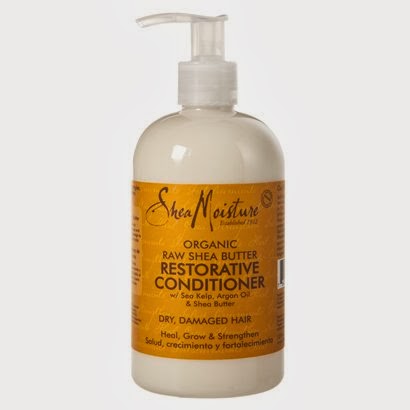So now that I understand a little bit more about porosity and how important it is to hair growth, I have decided to make a few changes. Before I explain what those changes will be I wanted to highlight some information on pH balance, as porosity and pH balance go hand in hand.
Without getting too technical, it is very important to understand how pH aids in maintaining optimal hair balance as this affects hair growth (length retention), its appearance (shine vs dull, frizz vs sleek, curl definition) and how your hair responds to products/ingredients (styling results).
Healthy hair is naturally more acidic, falling between a pH of 4.0-5.5. Several environmental factors can negatively affect the pH balance of our hair, such as chemicals, harsh shampoos, styling products and heat. When the hair is pH balanced, the cuticles remain slightly closed allowing it to remain strong and healthy and shiny. When the pH balance of the hair is too high the cuticles are raise and the cortex of the hair shaft is exposed, which can lead to tangles, frizz, knots making the hair more susceptible to damage and breakage. Similarly, when the scalp's pH is too high, you will experience various scalp disorders (e.g. dry, itchy, dandruff).
One way to create and maintain a healthy pH balance is by using products that is close to the appropriate pH range to help maintain (or restore) the hair's ideal pH levels when it is too high. The cuticles on curly hair tends to remain open as the curl pattern make it difficult for the cuticles to lie flat. Therefore, the products we use is very crucial. Learning this information has been a tremendous help to me as I try to get my hair back on track because similar to porosity, it has helped me understand why my hair is reacting to certain products in a negative way.
Armed with my pH testing strips, I tested all of the products I currently use. I recommend that you do this as well since very few companies post the pH level of their products.Testing strips will come in handy for another reason as well, which I will explain below. I also included the ideal range for these products.
Shampoo (6.0-5.0):
Shea Moisture Organic Raw Shea Butter Moisture Retention Shampoo 7.0
Shea Moisture Coconut & Hibiscus Curl and Shine Shampoo 7.0
Conditioner (5.0-4.0):
Aubrey Organics Honeysuckle Rose Conditioner 6.5
Shea Moisture Organic Raw Shea Butter Restorative Conditioner 5.5
Cantu Shea Butter Mask 5.0
Aubrey Organics White Camellia Ultra-Smoothing Conditioner 4.0
Leave In Conditioner (4.5-4.0):
Knot Today Detangler 7.0
Shea Moisture Organic Coconut & Hibiscus Hold & Shine Moisture Mist pH 6.5
Giovanni Direct Leave-in pH 6.0
Moisturizer (4.5-4.0):
Shea Moisture Organic Coconut & Hibiscus Curl and Style Milk pH 7.0
Qhemet Biologics Amla & Olive Heavy Cream 7.0
Qhemet Biologics Burdock Root Butter Cream 6.5
Shea Moisture Yucca & Baobab Volumizing Hair Milk 6.5
Oyin Handmade Honey Dew Lightweight Quenching Lotion pH 5.0
Stylers (4.5-4.0):
Komaza Care Califia Styling Pudding 7.0
Komaza Care Coconut Hair Pudding 7.0
Camilla Rose Naturals Almond Jai Twisting Butter 7.0
Entwine Coutour Jellé Styler 6.5
Lily of the Desert Aloe Vera Gelly 6.0
Eco Styler Gel (Olive Oil) 6.0
KCCC 4.5
As you can see a lot of the products I use do not fall within the appropriate pH range. Pair this information with the issues associated to high and low porosity I can understand why I have been struggling with frizzy, brittle, dry hair for so long.
So what does this mean for my hair? Well, I don't think it would be practical to run out and buy a slew of new products, but I do need to find a solution to address the issues I am having with my hair if I hope to retain my lengths. One solution would be to "create" pH balanced products that will work best on my hair. This best way to accomplish this is to simply add ingredients that test higher in acidity to my hair products in an effort to lower its alkalinity. This would include ingredients like:
Aloe Vera Juice 4.0
Vinegar 2.5
Lemon Juice 2.0
ACV 3.5
This is where those additional testing strips I discussed above will be helpful. Once you've added one of these ingredients to your products, retest it to make sure it falls within the appropriate range. For example, I add some distilled water and 1/4 tsp of lemon juice to approximately 4 oz of shampoo lowering it from a 7.0 pH to 5.5 pH. I've noticed a difference in how my hair feels after shampooing when I've done this over a period of time.
If you are going to add anything to your products to lower its pH level, it is highly recommended that you separate a small amount of the product you would like to use and gradually add one of the ingredients listed above to ensure that you do not "spoil" the larger batch.
I hope this helps you out as much as it has helped me.
HHG!










 .I haven't tried it more than a few times, so my assessment could change, but I really doubt it.
.I haven't tried it more than a few times, so my assessment could change, but I really doubt it.




